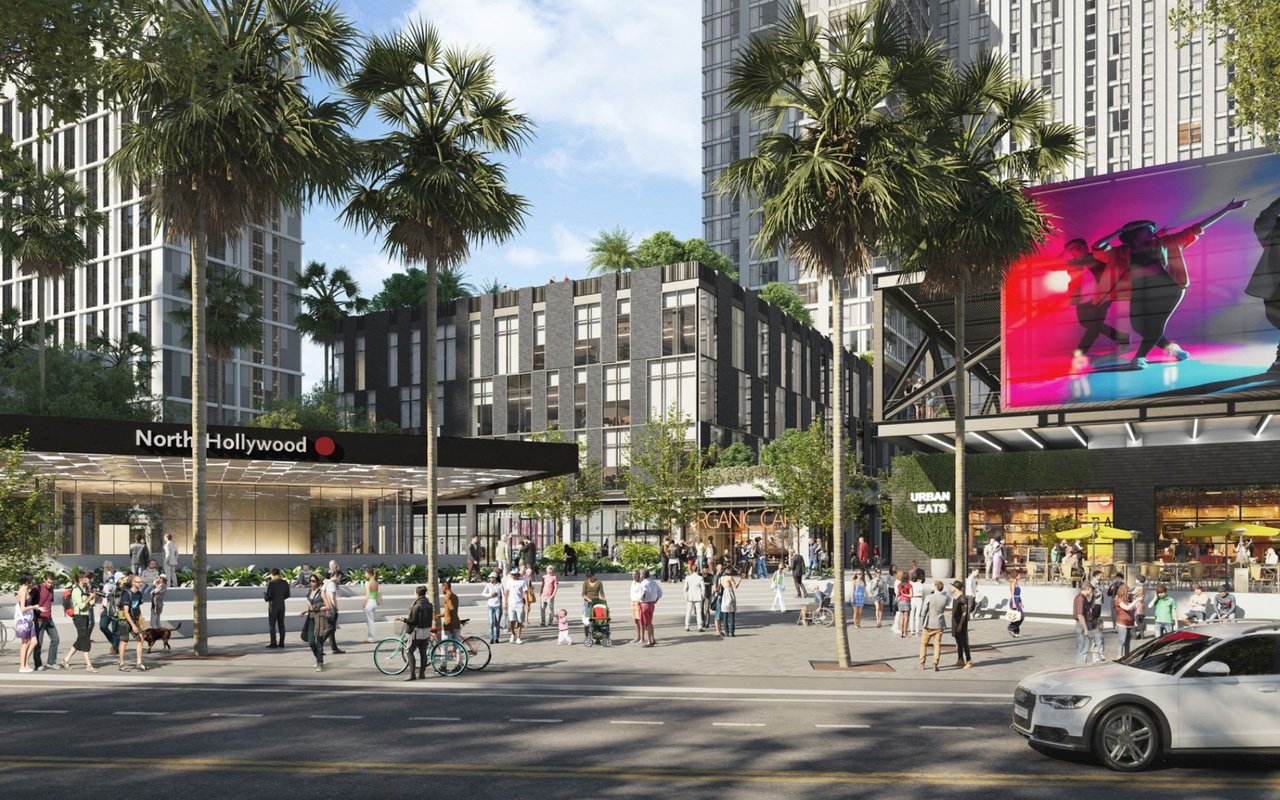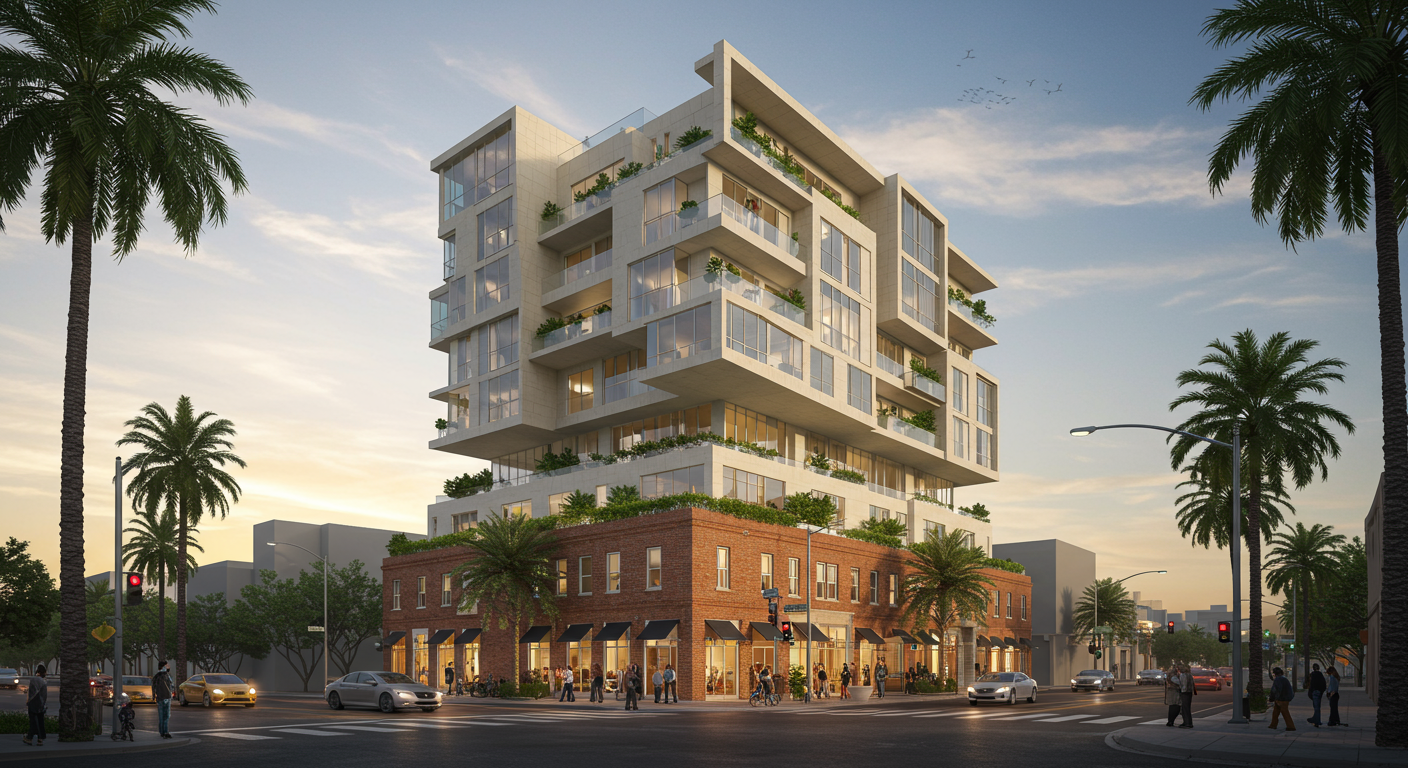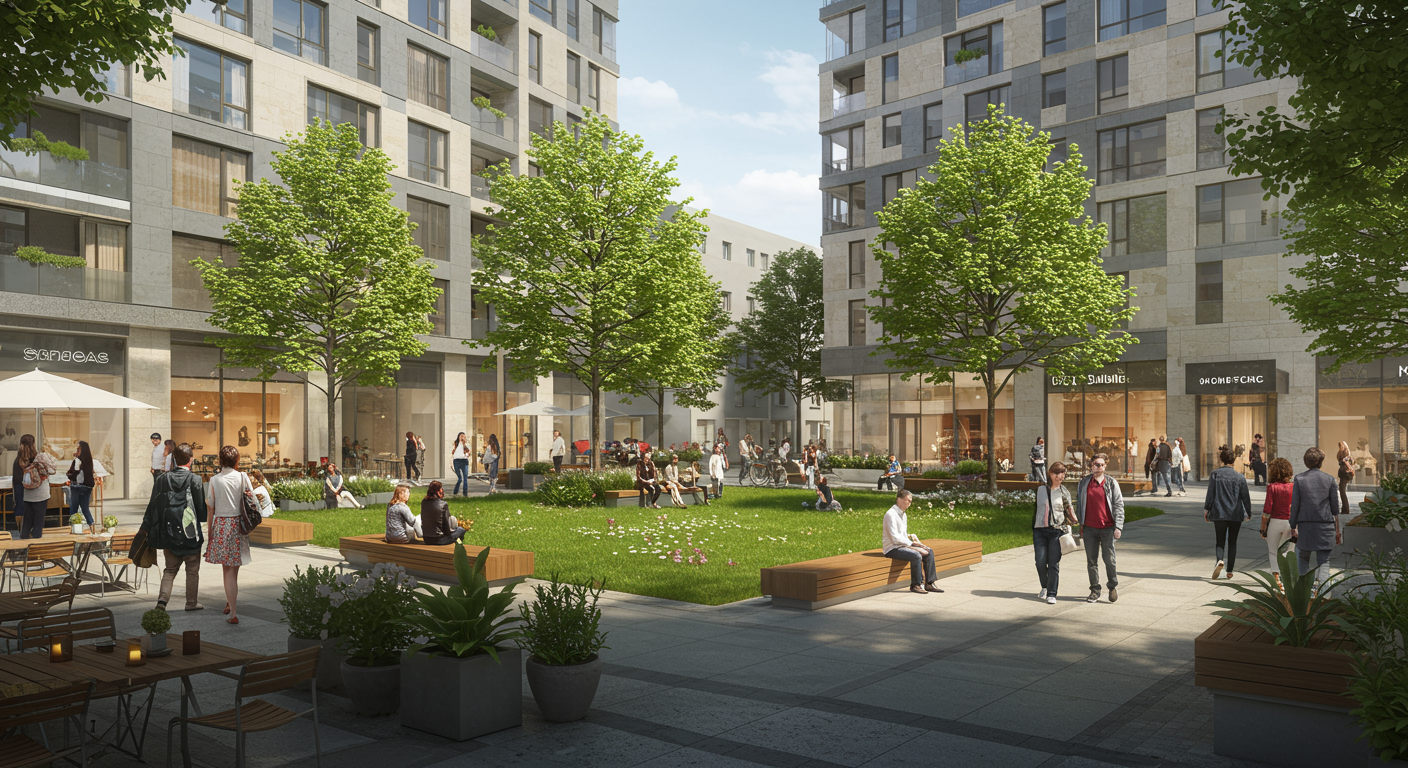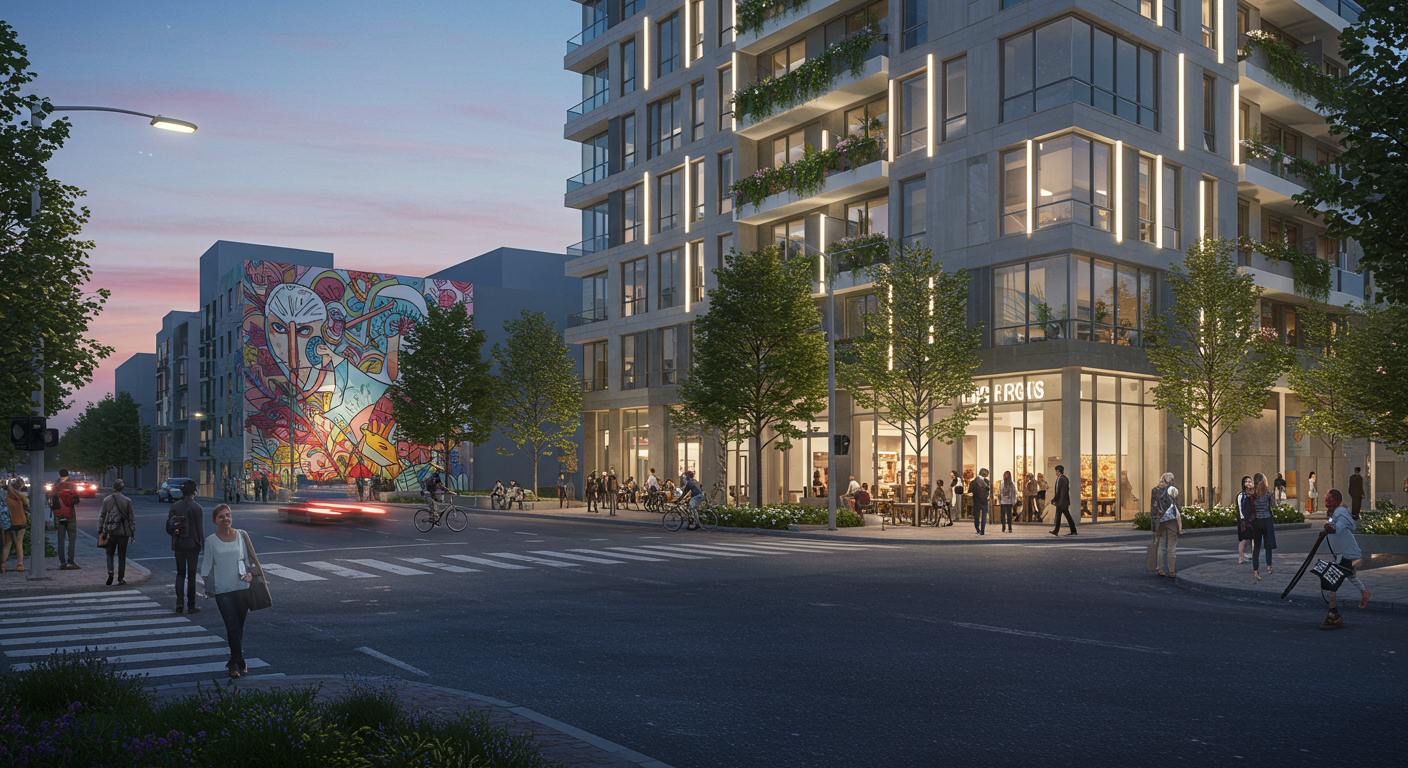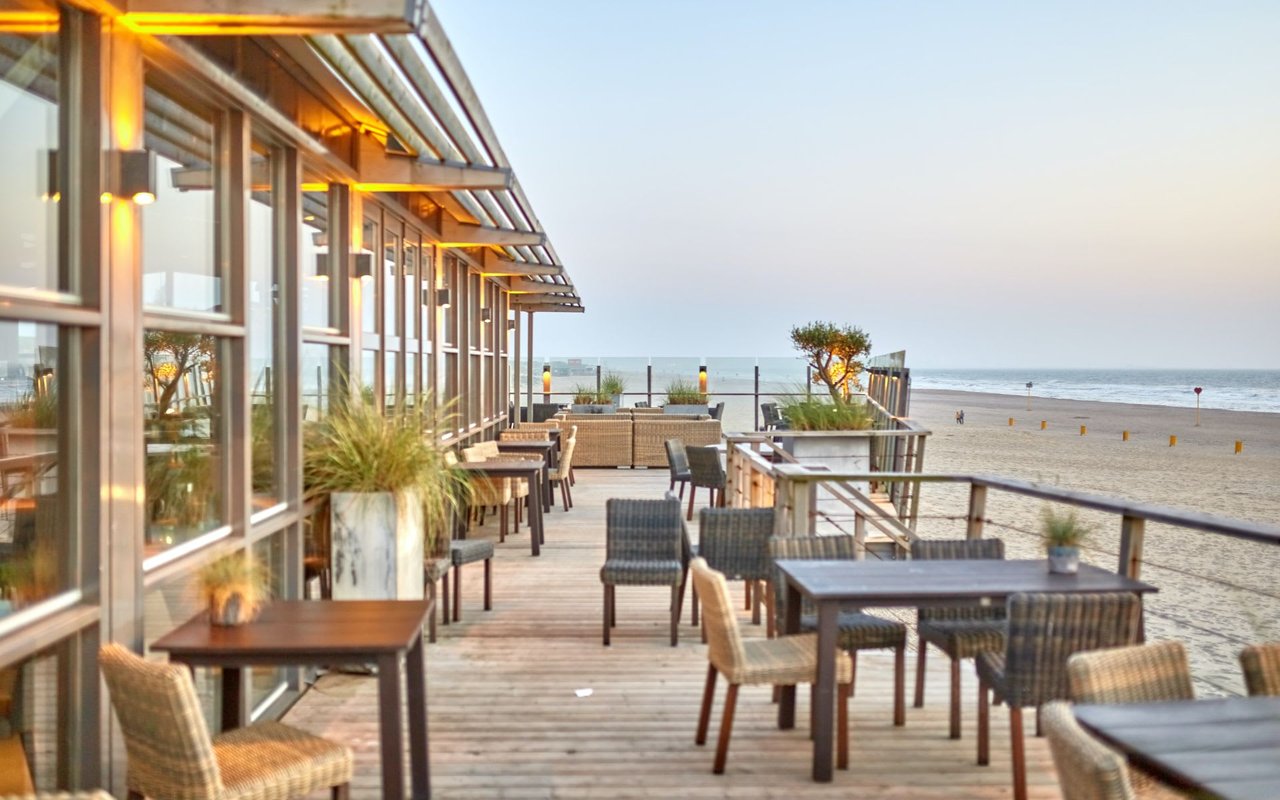When Los Angeles’ Red Line subway was completed in 2000, its northernmost station appeared desolate above ground.
People arriving in North Hollywood on the underground train rode up a grand escalator past tile murals to find themselves on an expanse of asphalt parking lots, where commuters could rush through free of the temptation to linger over so much as a cup of coffee. It looked like what it was — the end of the line.
Thousands of apartments and some plush office buildings have been added nearby in intervening years, but the prime real estate around the portal is still mostly bare, waiting on a long-imagined development where people might live, work, shop for groceries, and have drinks or dinner.
That vision is finally taking shape, with developers and transit officials set to apply Monday for city permission to build a $1-billion mixed-use complex that would surround the subway entrance and adjacent hub for connecting bus routes, including the well-traveled Orange Line to Warner Center and Chatsworth.
The latest proposal by developer Trammell Crow Co. and the Los Angeles County Metropolitan Transportation Authority calls for a village called District NoHo that would include apartments, offices, stores, bars and restaurants. It would be the largest development at an MTA station in an era that has seen a flurry of construction around train stops as new rail lines branch out around the county.
“We probably won’t have an opportunity like this again,” said Wells Lawson, a senior director in the MTA’s joint development group.
Development sites around the NoHo train station were assembled by the Los Angeles Community Redevelopment Agency, which was disbanded in 2012. Other new stations such as those being built along Wilshire Boulevard are in densely developed neighborhoods, making it harder to find adjacent sites for new construction.
A 10-story office tower as shown in this rendering on the southwest corner of Lankershim and Chandler boulevards would contain about 1,000 workers each day. (Gensler)
But in North Hollywood, Trammell Crow and its housing group High Street Residential have nearly 16 acres to create a community with 1,500 apartments, a 10-story office tower, and various dining and entertainment options. There would be about three acres of open space that could be used for leisure or public gatherings, including live entertainment events.
“Our goal is to create a project of regional significance that would bring to the Valley a live-work-play dense urban environment,” said Brad Cox of High Street Residential. “The East Valley doesn’t really have a true urban node.”
The apartments are to be divided among six different buildings, with two of them containing a combined 300 units designated affordable, or 20% of the total. Renters who earn no more than 60% of the area’s median income at the time would qualify for a lottery to become residents.
The other 1,200 units are to rent at market rates, and Cox anticipates that many of the occupants will work in the entertainment industry. Nearby via train are Universal City, Burbank and Hollywood.
District NoHo would have 1,500 apartments, a 400,000-square-foot office tower and restaurants, bars and shops as shown in this rendering. (HKS / RELM)
North Hollywood, meanwhile, has long been known as a home to people in performing arts, and the arrival of the subway two decades ago only bolstered its reputation, said Abbey Ehman of Trammell Crow.
“It’s considered the dance capital of the world,” Ehman said, and the NoHo Arts District near the station has about 20 live theaters including the El Portal, which opened as a vaudeville house in 1926.
A few paces from the transit terminal on Lankershim Boulevard is the home of the Television Academy, where a gold 27-foot Emmy Award statue commands its courtyard.
“There are a lot of working artists in the community,” Lawson said. “Ensuring they have a place to live and work in the community is really important.”
Retaining artists in gentrifying neighborhoods historically has been tricky; it’s a common pattern that artists help make an inexpensive neighborhood such as New York’s SoHo hip but end up being displaced by wealthier newcomers attracted to the vibe.
Many artistic people moved to North Hollywood in recent years because it was a bit more attainable than other desirable neighborhoods, the developers said.
Average monthly apartment rent in North Hollywood was $2,371 in September, according to Zillow, up about $25 from the same month a year ago.
In this rendering, District NoHo would be a small neighborhood with about 3,000 residents and 1,000 daily office workers.
(HKS / RELM)
In addition to outdoor performance space that may be used for theater and dance, District NoHo would have public art integrated into the buildings in murals, sculptures and their actual forms, Lawson said. “We’re looking at the buildings themselves to be artful. It should be something that stimulates you.”
In an effort to make the complex more visually interesting and less homogeneous, the developers hired three different architecture firms that specialize in urban infill projects: Gensler, HKS and KFA. A network of pedestrian and bicycle paths would link residents and office tenants with restaurants, bars, stores and transit.
Included in the mix of tenants would be a grocery store, Ehman said, in keeping with MTA’s desire to have businesses in the complex’s 100,000 square feet of retail space dedicated to serving neighborhood residents.
“District NoHo retailers will be a mix of local neighborhood businesses and national brands,” Ehman said.
The 400,000-square-foot office tower on the southwest corner of Lankershim and Chandler boulevards would hold about 1,000 workers each day, and the apartments would be home to about 3,000 people, Cox estimated.
District NoHo is to be developed in a public-private partnership that requires Trammell Crow to pay for public improvements including upgrades to the station and the consolidation of bus arrivals on the west side of the station, intended to make transitions between transit lines more efficient.
The company expects to spend about $100 million on transit improvements and rent to the MTA on a ground lease giving Trammell Crow control of the land for its for-profit developments.
The developers would extend existing streets into the complex and create parking for more than 4,000 cars, including at least 900 spaces for drivers getting on Metro lines. About 28,500-weekday travelers come into or leave North Hollywood on Metro now, but the total is expected to increase as people move into District NoHo.
Trammell Crow would be required to finish the public improvements and one building of affordable housing before constructing the offices, shops and market-rate apartments.
If approved by the city, the first phase of construction would begin in late 2021 and proceed in phases tied to market demand for the new housing. Completion would take six to eight years, Lawson said.
The MTA met with local residents before preparing guidelines to develop the site, he said, and found them generally willing to back a large-scale project.
“The community has been exceptionally supportive of higher densities at this location,” he said, “which helps make it an interesting project.”

